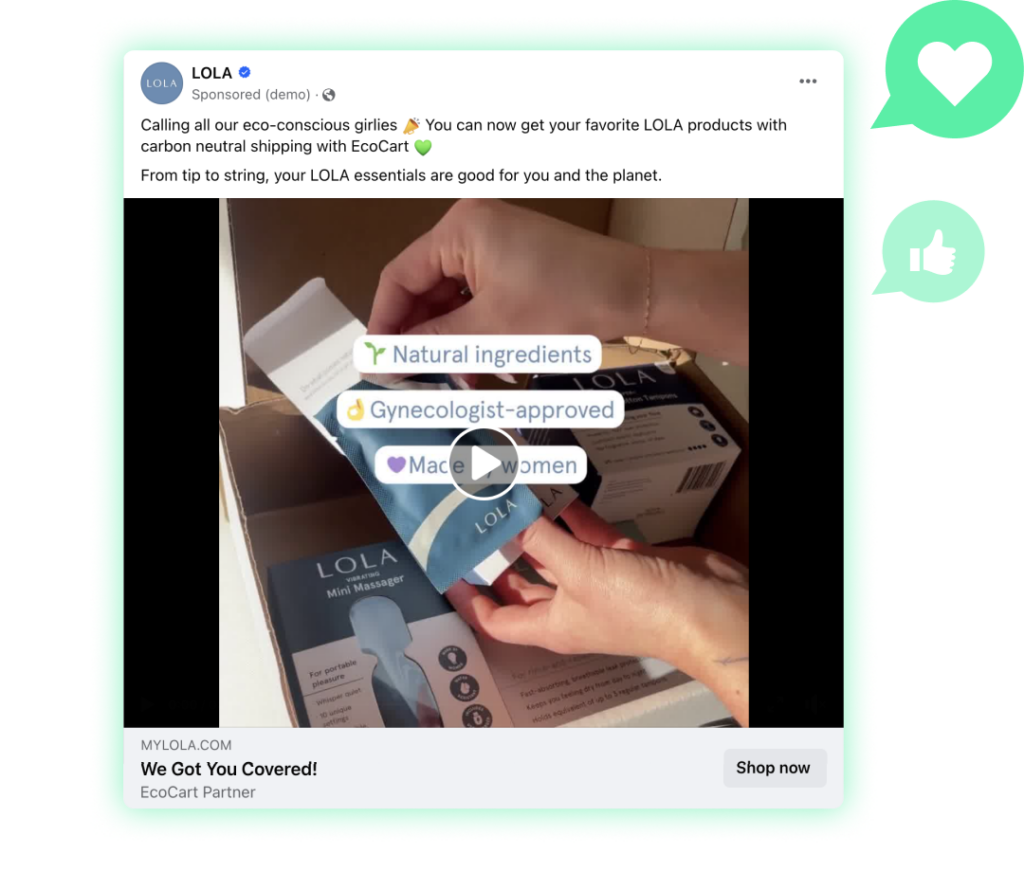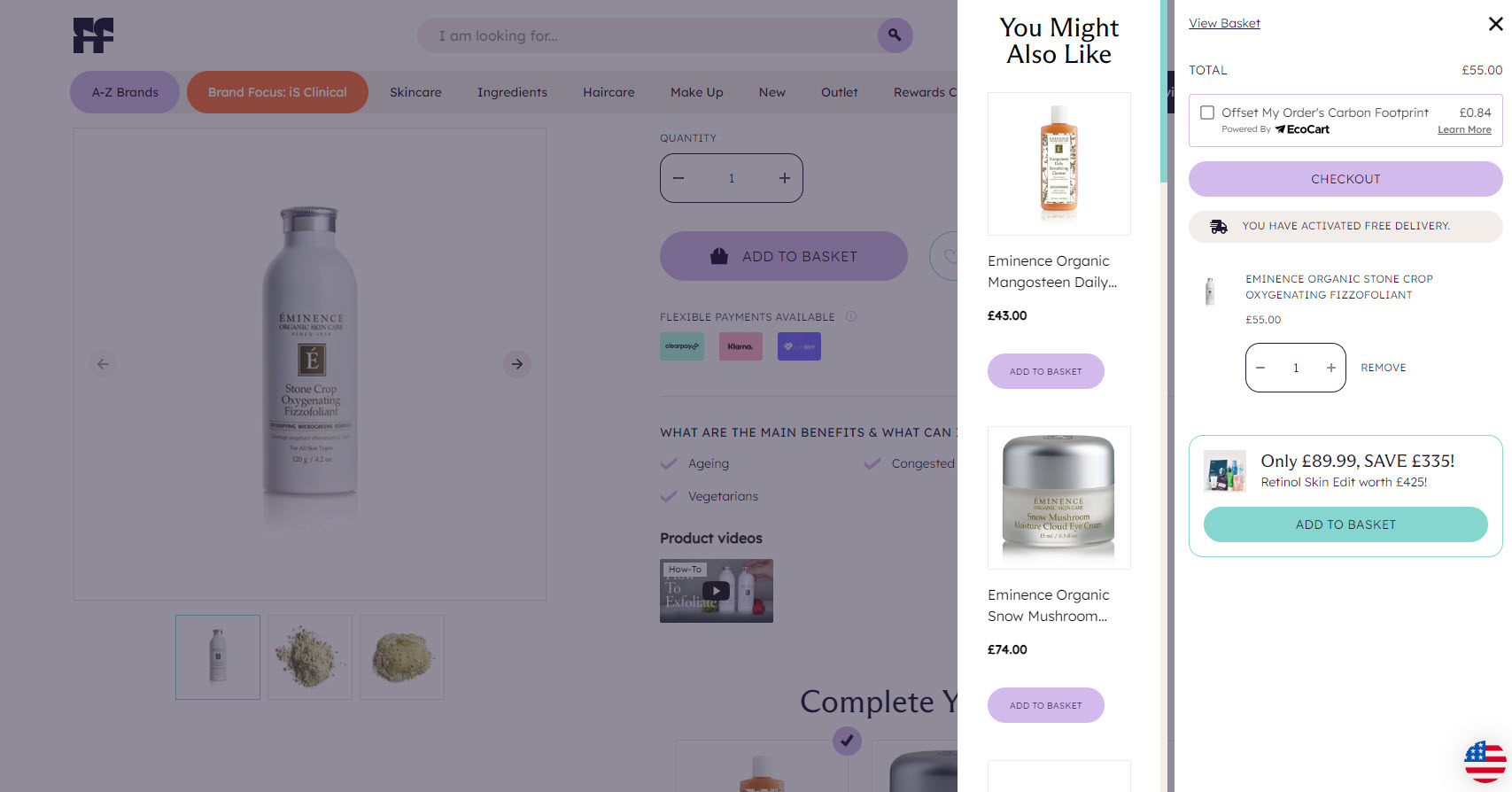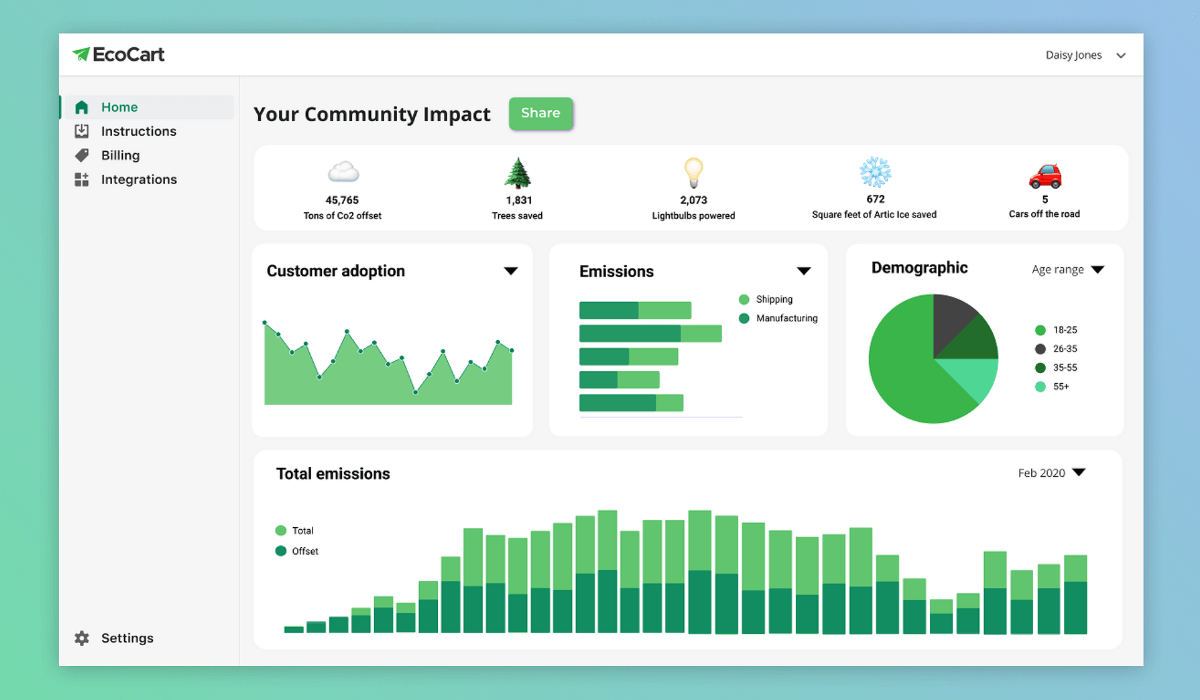Sustainable sourcing stands at the forefront of eco-conscious business practices. It’s a crucial element, as a significant portion of a company’s environmental footprint emanates from its value chains. For businesses committed to achieving their Environmental, Social, and Governance (ESG) objectives and upholding corporate social responsibility, integrating sustainability into their supply chain is non-negotiable.
But what exactly entails sustainable sourcing, and how can your ecommerce business navigate this terrain to ensure both your sourcing processes and suppliers align with sustainability principles? Dive into our comprehensive guide to discover actionable strategies and insights for transforming your supply chain into a beacon of sustainability.
What Is Sustainable Sourcing And Procurement?
Sustainable sourcing and procurement is the practice of ensuring that the raw materials and products that a company uses are ethically sourced. It goes hand-in-hand with supply chain sustainability; a huge piece of sustainable sourcing is ensuring your suppliers are sustainable.
While environmental sustainability tends to be the main factor that businesses and stakeholders focus on, it’s important that sustainable sourcing also considers the social and governance factors. This means that, as your company develops its sustainable sourcing strategies, it must include things like fair trade, worker’s rights, and diversity, too.
Learn more: Sustainability vs CSR vs ESG
Types Of Sustainability In Procurement
Sustainable procurement is all about ensuring that your sources follow responsible ESG practices. Because of this, sustainable sourcing will address environmental sustainability, social sustainability, and economic sustainability. It’s essential that your supply chain management takes all of these into account. While environmental sustainability is a major topic of conversation and a crucial one, both social responsibility and economic sustainability are equally critical.
Read through our guide to ESG certification for an outline of what these ESG practices look like. Let’s review ESG in sustainable sourcing.

Environmental sustainability
When developing sustainable sourcing practices, you must first ensure that your products and materials are sourced in an environmentally friendly way. You’ll need to consider things like carbon emissions, the use of virgin materials, circularity, renewable energy, and more.
Although the primary goal of environmental responsibility is to be a good steward of our planet and ensure prosperous living for future generations, there are economic benefits to sustainability, too. For example, using recycled materials instead of new, virgin materials not only minimizes potentially detrimental materials extraction processes, such as mining, but also conserves those that renew slowly, ensuring their availability for years to come.
Social sustainability
Historically, social sustainability has taken a backseat to environmental sustainability. However, new and proposed regulations across the globe are changing this. Laws such as the Uygher Forced Labor Prevention Act in the United States, the German Supply Chain Due Diligence Act in Germany, and the EU’s Due Diligence in Supply Chains all place the burden of responsibility on companies to ensure that their suppliers operate in a socially responsible manner.
This shows the shift in priorities when it comes to ESG, and the social factor is now held in equal regard to the environmental factor. This means that your company’s sustainable procurement strategy needs to analyze its suppliers’ commitment to fair trade, human rights, and workers’ safety policies.

Governance
The third factor of ESG, governance, is the piece that gets the most ignored. This does not mean that it’s unimportant. As you develop your sustainable sourcing practices, you must remember this part if you want to be comprehensive. Governance refers to the way an organization operates, including its decision-making processes, diversity, employee welfare, rule-setting, and more. Governance is essential for security; you need to know that your suppliers operate in a way that will ensure long-term success.
Economic sustainability
Governance and economic sustainability go hand-in-hand as the former lends itself to the latter. Economic sustainability refers to practices and decisions that nurture long-term sustainable growth. As you analyze your suppliers for sustainable sourcing, you must ensure that their governance and decision-making are set up in a way that promises continued success. Environmental and social sustainability can only go so far if companies do not see financial advancement. A sustainable supply chain, therefore, must be able to demonstrate long-term goals and scalability within its ESG targets so that your company can find security.
Want to know where your business stands? Get your sustainability scorecard with our quiz:
Why Do Sustainable Procurement Practices Matter?
Scope 3 emissions—carbon emissions along the value chain—account for 80 – 90% of a company’s carbon footprint. Due to industrial processes, many of these emissions occur early in the supply chain. This statistic shows what a significant impact your procurement can have on your impact.
While environmental impact is an important factor in sustainable sourcing, it’s not the only reason why sustainable sourcing matters. A survey by EcoVadis found that 63% of corporate respondents and 71% of suppliers who responded claimed that their sustainable sourcing strategies helped them through the pandemic. This was due to the resilience that sustainable supply chains exhibit.
Furthermore, supply chain transparency and traceability pose some of the greatest challenges when it comes to sustainable sourcing. In 2021, the supply chain management market was valued at over $21 billion, and it’s expected to continue to grow. This illustrates that stakeholders place great importance on traceability. As more companies take the time to monitor the sustainability performance of their supply chains, the demand for traceability will only grow, which will minimize tainted supply chains, ensuring ethical practices.

Benefits Of Sustainable Sourcing
Sustainable sourcing is good for business, the environment, and humanity. By ensuring that your supply chain is sustainable, your company does its part to promote socially and environmentally responsible practices. Besides the ethical factors, a sustainable sourcing strategy also ensures compliance, avoids risks, and aligns with consumer demand. If your company can show that its supply chains are sustainable, it’ll be placed above the competition and display resilience to potential investors.
Here are some of the biggest benefits of sustainable sourcing.
- Environmental impact: As mentioned previously, a considerable portion of a company’s environmental impact comes from its value chain. Investing in environmental sustainability performance along your supply chains can significantly minimize your environmental impact.
- Consumer demand: According to Business Wire, 85% of consumers have shifted to eco-friendly purchasing decisions. As customers become more savvy regarding sustainable supply chains, it will only become more important for companies to display transparency and responsibility with their suppliers.
- Resilience: As you work with your suppliers to develop more sustainable practices, you’ll build lasting relationships to help you avoid supply chain disruptions or other risks affecting your operations.
- Regulatory compliance: As mentioned above, many new and proposed laws surround responsible supply chains. As you work to develop sustainable practices, try to be proactive and anticipate future regulations so that you can continue to be compliant.
- Cost savings: Although there may be upfront costs to implementing sustainable sourcing strategies, sustainable companies often see cost savings through renewable energy sources, less waste to be managed, regulatory compliance, and more.
- Innovation and efficiency: Necessity is the mother of innovation, and as companies and consumers push suppliers to be more sustainable, it encourages innovation surrounding sustainability initiatives.
Tips For Supporting Sustainability In Procurement
It’s easy to understand why sustainable sourcing is important. Developing a sustainable procurement program that aligns with your sustainability initiatives is much more difficult. Supply chain sustainability is challenging because you don’t have full control. All you can do is offer support to your suppliers, encourage them toward sustainable practices, and, if need be, switch to a supplier that can help you reach your sustainability KPIs.
Here are some tips to support your sustainability initiatives along your supply chains.
1. Engage your suppliers
Sustainable sourcing to promote sustainable ecommerce only works if your suppliers are engaged. After all, at the end of the day, your company can only provide support. Your suppliers are in charge of their operations, so if they’re unwilling to make changes to be more sustainable, then you might need to switch to a supplier that is willing. Before you begin strategizing, reach out to your suppliers to gauge how prepared they are to join you on your sustainable business growth journey.

2. Audit your supply chain to see where you stand
You can’t make meaningful, actionable targets without knowing your baseline. Once your suppliers are engaged, you can work with them to conduct a full, comprehensive audit of their operations, environmental footprint and sustainability, covering all three ESG factors. Once this is done, compile an ESG report so that you can see where you stand. Read our guide to conducting a supply chain audit.
3. Develop sustainability targets for your suppliers to achieve
When prioritizing your suppliers’ sustainability targets, you should first focus on compliance, ensuring that your suppliers carry the necessary social and environmental responsibility needed according to current regulations. Once those are covered, set targets that align with your organization’s sustainability goals. For example, if your company has net zero ambitions, start developing strategies for decarbonizing your supply chain. Or, if you’re looking to reduce waste, come up with a circular economy strategy.
Examples Of Sustainable Sourcing
If this all seems a little overwhelming, it’s probably because it is. Sustainable sourcing remains one of the greatest challenges of modern business, and even the big players have struggled to create their supply chain strategies. Luckily, plenty of companies have developed excellent sustainable sourcing strategies that we can look to for inspiration.
Here are a couple of sustainable sourcing examples within green ecommerce that we love.
LOLA
LOLA Jeans is committed to sustainability in all facets of its operations, from water usage to waste management. It sends all of its scraps to recycling facilities and uses software to gain insight into the impact of each and every pair of jeans. It supports sustainable sourcing by investing in organic cotton that’s RCS (The Recycled Claim Standard) certified. Furthermore, it has partnered with an eco-friendly packaging company, ensuring its packaging is 100% recycled. By partnering with ethical suppliers, LOLA ensures that its sources are sustainable. To top it all off, LOLA provides a sustainable checkout experience by partnering with EcoCart:

Face the Future
This beauty company is committed to environmental practices, especially surrounding its carbon footprint. Therefore, it has developed a sustainability strategy centered around carbon emissions, including its choice of suppliers. They choose partners that align with their sustainability goals and work with current suppliers to ensure they make the most sustainable choices possible.

Wildway
Wildway, a snack company, has always had sustainability at the core of its operations. It promises sustainable sourcing through its green business certifications like Organic Certification and Non-GMO Certification, ensuring its ingredients come from a sustainable source.

How EcoCart Helps Businesses With Sustainability
We know that the journey toward business sustainability is a challenging one. That’s why we’ve developed plenty of resources to help ecommerce companies reach their carbon emissions goals. We support sustainable shipping practices by offering carbon-neutral shipping for your customers at checkout through carbon offsetting projects.

We also provide an ecommerce sustainability scorecard and emissions dashboard so that you can see exactly where you stand in terms of your carbon emissions. Finally, we offer resources to help you share your sustainability story with your customers, building brand loyalty. If you’re serious about reaching your carbon goals, partnering with EcoCart can help you get there.
Conclusion
Companies that are serious about sustainability can’t forget their supply chains. While developing a sustainability strategy for your business is always a good idea, if your strategies forget your supply chains, it’s not addressing your entire impact. You must engage your suppliers and build sustainable sourcing strategies if you truly want to build a sustainable ecommerce business.
EcoCart can help you reach your sustainability goals. Reach out to our team for a demo today.



